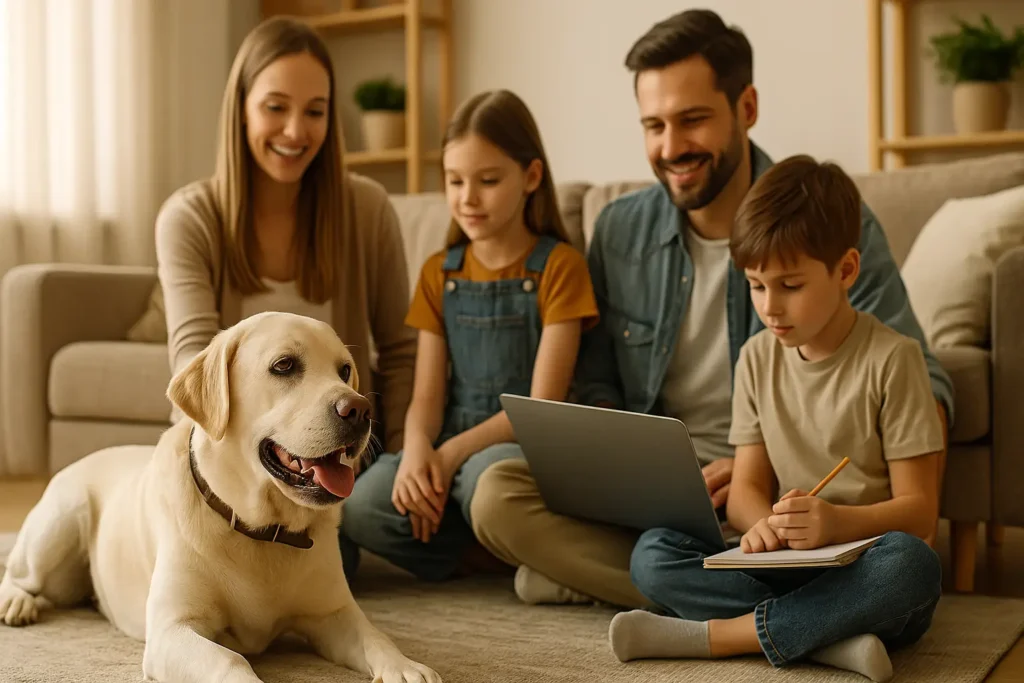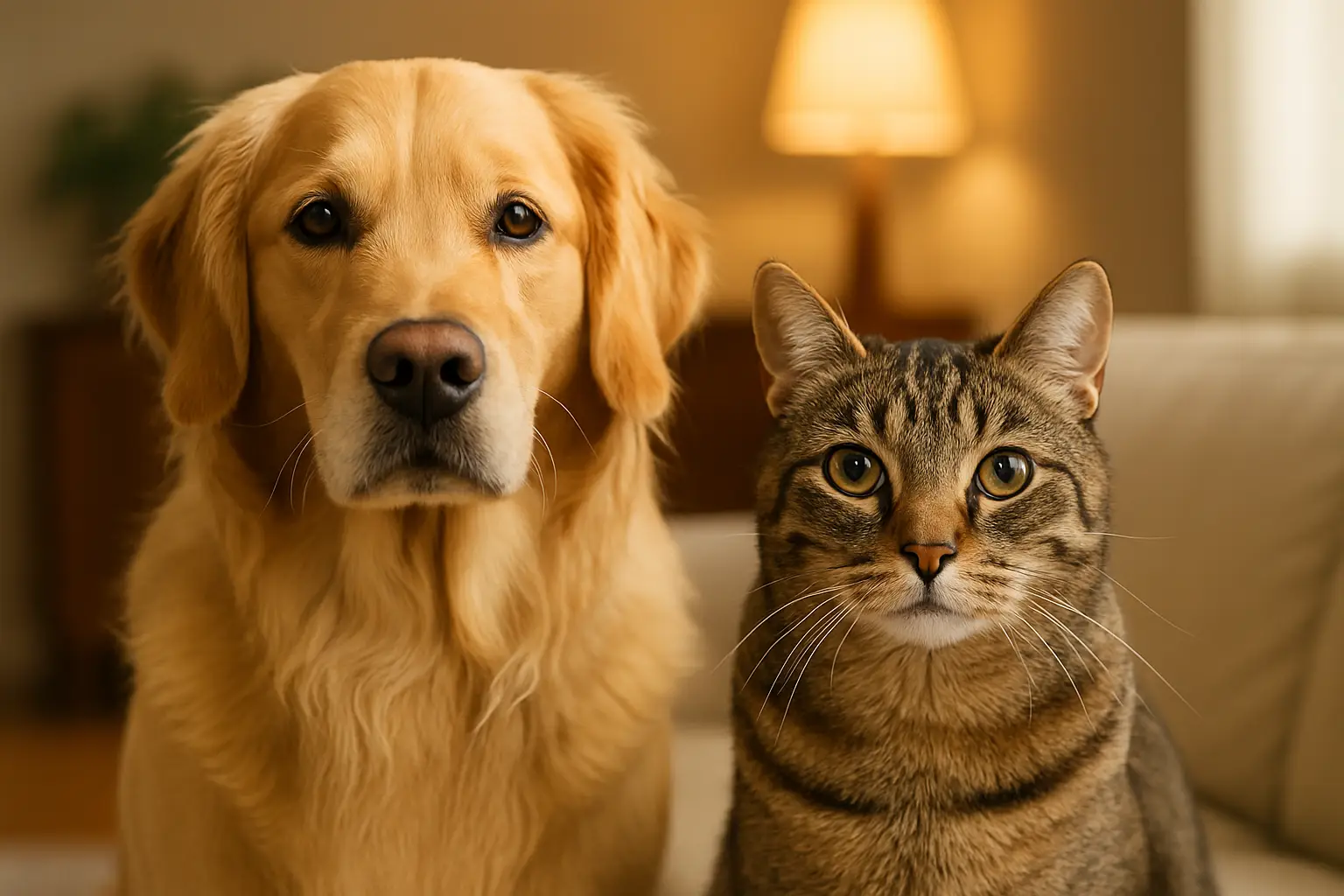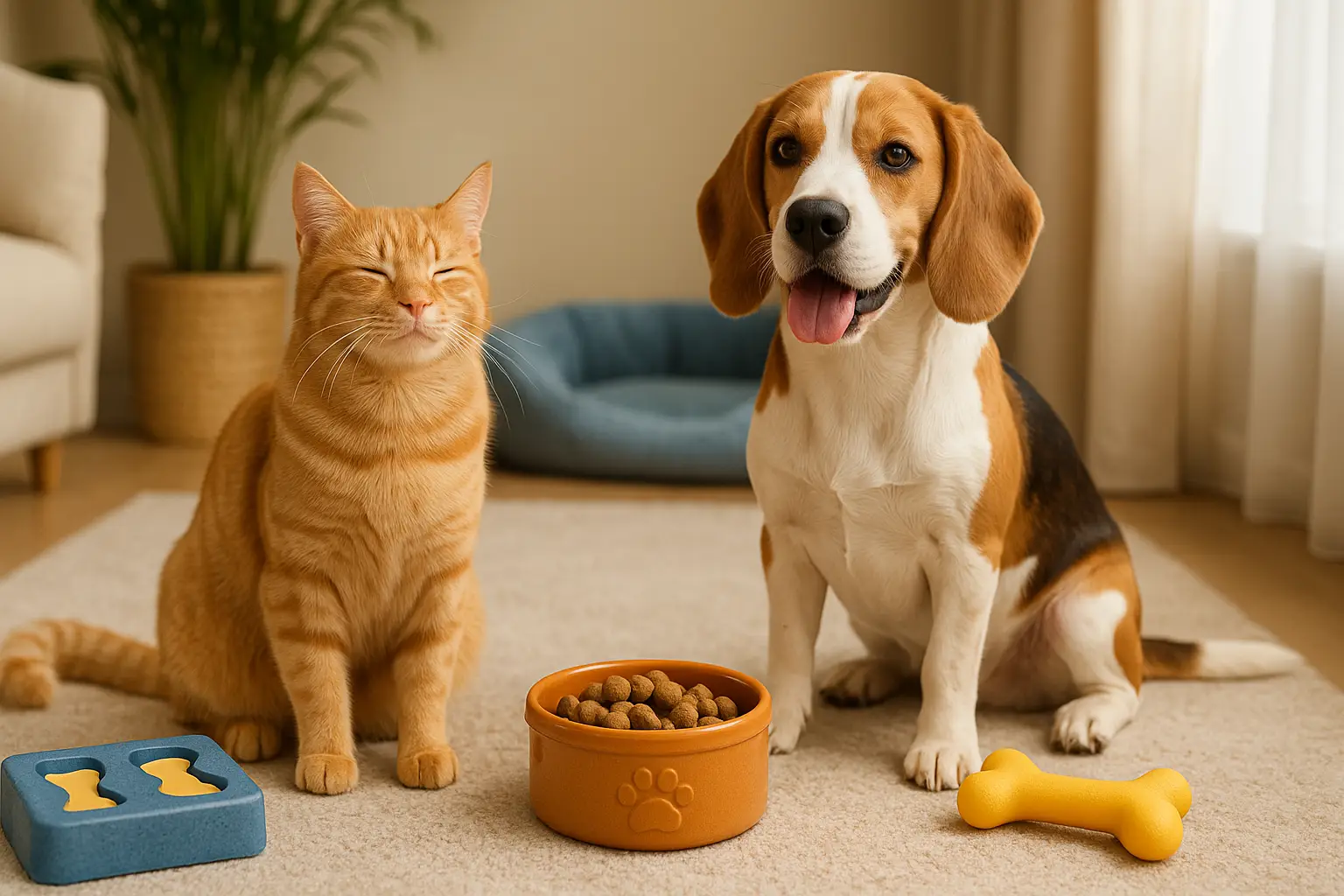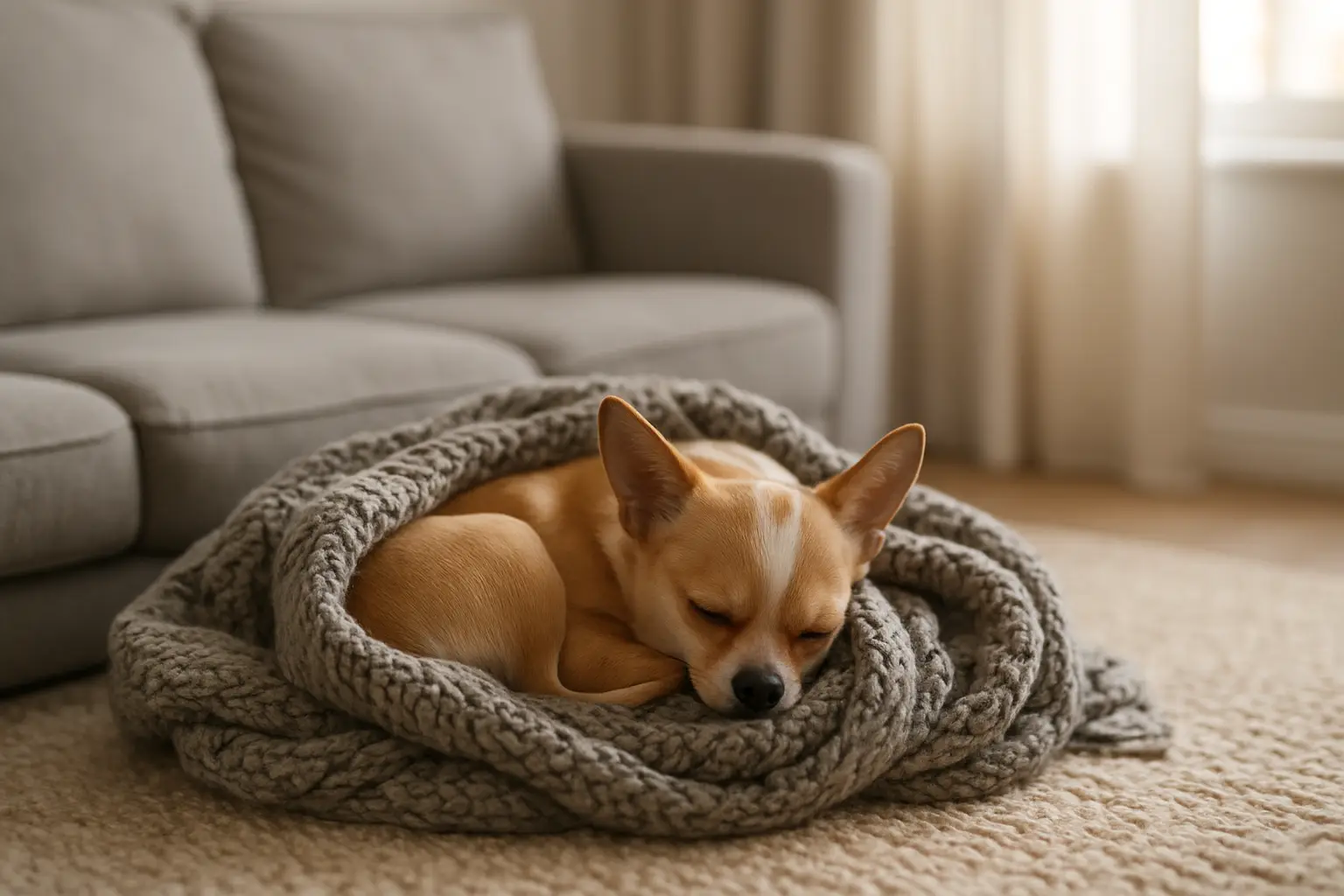How to Set Up a Pet Routine That Works for Everyone in the Household 🐶🕒👨👩👧👦
Pets are creatures of habit. They love knowing what comes next—when it’s time to eat, play, sleep, and cuddle. But when you share your home with a family, housemates, or a busy schedule, finding a routine that works for both your pet and everyone else can feel overwhelming.
The truth is: a structured pet routine doesn’t just benefit your furry friend—it brings harmony, efficiency, and predictability to the entire household.
In this comprehensive guide, you’ll learn how to:
- Understand your pet’s natural rhythm
- Create a flexible yet consistent schedule
- Involve everyone in the house
- Balance multiple species and personalities
- Adapt for weekends, travel, and real life
Let’s build a daily flow that works for your pet and your people—with less chaos and more connection.

Why Pets Thrive on Routine 🧠🐾
Routines offer emotional stability for both dogs and cats. Predictability gives them a sense of control in their environment, which reduces anxiety and encourages good behavior.
Benefits of a stable pet routine:
- Decreases stress and separation anxiety
- Reduces destructive behavior and barking
- Helps with housetraining and litter box use
- Improves sleep and digestion
- Makes vet visits and grooming less scary
- Strengthens communication between pet and human
💬 Imagine waking up and not knowing when (or if) you’ll eat, go outside, or interact with anyone. That’s what life without a routine feels like for many pets.
Step One: Map Out Your Pet’s Natural Needs 🧾
Before creating a routine, understand your pet’s species-specific needs and individual temperament.
🐶 Dog Routine Basics:
| Need | Frequency |
|---|---|
| Bathroom breaks | 3–5x per day (puppies more) |
| Walks/exercise | 1–2x per day |
| Meals | 2x per day (puppies 3–4x) |
| Training/play | Daily |
| Rest/nap time | Multiple short naps |
🐱 Cat Routine Basics:
| Need | Frequency |
|---|---|
| Litter box access | Always available |
| Interactive play | 2–3x per day, 10–15 minutes |
| Meals | 2x per day or small portions |
| Alone time | Daily (self-soothing) |
| Grooming/petting | Depends on cat’s preference |
🎯 WordPress Suggestion: Add a printable “Pet Needs Checklist” for each type of pet.
Step Two: Build a Base Routine Around Key Anchors 🧱
Anchor your routine to events that happen daily—regardless of work shifts or family dynamics.
Common routine anchors:
- Wake-up time
- Morning bathroom break
- Meals
- Midday activity
- Evening wind-down
- Bedtime
⏰ Sample Routine for a Dog:
| Time | Activity |
|---|---|
| 7:00 AM | Wake up, bathroom, walk |
| 7:30 AM | Breakfast |
| 9:00 AM | Nap / downtime |
| 12:00 PM | Potty break, training session |
| 3:00 PM | Enrichment toy/play |
| 6:00 PM | Dinner |
| 8:00 PM | Walk or cuddle time |
| 10:00 PM | Final bathroom + bedtime |
Step Three: Balance the Human Schedule 🧍♀️🧍♂️🐕
Now it’s time to fit your pet’s ideal day into the reality of your family’s life.
Ask Yourself:
- Who is home and when?
- When do major household transitions happen (commute, school run)?
- Who can realistically do which task (feeding, walking, cleanup)?
- What are non-negotiable time blocks?
🎯 Activity: Create a shared family calendar (Google Calendar, printout on fridge, etc.) and assign tasks with names.
✅ Example:
- Monday AM walk → Alex
- Tuesday PM feeding → Mom
- Saturday play sessions → Kids
👨👩👧👦 WordPress Block Idea: “Pet Routine Family Scheduler” with assignable fields
Step Four: Include Structure and Flexibility 🌀
Your routine should feel reliable—but not robotic.
🔁 Use Time Ranges, Not Exact Minutes
Instead of “feed at 7:05,” plan within windows like “7:00–7:30 AM.”
This reduces stress if you’re late, and your pet still feels secure.
🔄 Rotate Activities
Example:
- Mondays = puzzle toy
- Tuesdays = long walk
- Wednesdays = hide-and-seek
- Thursdays = trick training
- Fridays = sniff walk
🌈 Variety prevents boredom while still offering structure.
Step Five: Create Visual Cues for Pets 📣
Pets don’t understand clocks—they understand patterns and environmental cues.
Effective Cues:
- You putting on shoes = time to walk
- Light classical music = nap time
- Opening a specific cabinet = meal prep
- Blanket on the couch = cuddle time
- Closing blinds = bedtime
🎵 You can even use sound cues (soft chimes, white noise) to reinforce time-of-day transitions.
Step Six: Involve Kids (Safely) 🧒🐾
Pets can be powerful teachers of responsibility—but only with guidance.
Kid-Appropriate Pet Tasks:
| Age Group | Tasks |
|---|---|
| 3–5 years | Refill water bowl, basic brushing |
| 6–9 years | Feed meals, gentle play, poop pickup |
| 10–13 years | Training commands, leash walking (supervised) |
| Teens | Vet appointments, grooming help |
✅ Always supervise and reinforce kindness, patience, and consistency.
🧩 Add a “Pet Chore Chart for Kids” block with editable columns.
Step Seven: Adjust for Real Life (Weekends, Travel, Guests) ✈️
A great routine can bend without breaking.
Weekend Adjustments:
- Keep meals within 1 hour of weekday time
- Use late mornings for longer play or sniff walks
- If sleeping in, set up an automatic feeder
Travel & Disruptions:
- Use routines to guide pet sitters (leave printed version)
- Keep bedding, toys, and feeding tools consistent
- Use calming products (pheromones, white noise, calming treats)
🚗 Add a “Pet Travel Routine Tips” visual block
Tips for Multi-Pet Households 🐶🐱🐹
More pets = more needs = more complexity.
Best Practices:
- Feed pets separately if one is food-aggressive
- Stagger walks/playtime if personalities clash
- Ensure all pets get individual time daily
- Use multiple litter boxes, toys, and resting areas
- Monitor for signs of tension or jealousy
🧠 Add a “Multi-Pet Tracker” template for balancing needs weekly
Tech Tools to Support Your Routine 📱
Modern routines can be automated for smoother execution.
Smart Tools to Try:
- Automatic feeders with programmable times
- Pet camera for check-ins and interaction
- App-based reminders for feeding, walking, meds
- GPS collars to track movement
- White noise machines or smart speakers to cue quiet time
🔧 Add a “Top 5 Routine-Friendly Pet Tech Tools” block with mini reviews
Final Thoughts: Routines Create Connection ❤️
When your pet knows what to expect—and everyone in the house knows their role—life becomes easier, calmer, and more joyful.
It’s not about a rigid schedule. It’s about rhythm. Trust. Flow. When your dog gets their walk, your cat gets their play, and your family shares the care, everyone benefits.
You don’t need to be perfect—you just need to be predictable. Start simple, build together, and watch your household (and your pets) thrive.




Post Comment